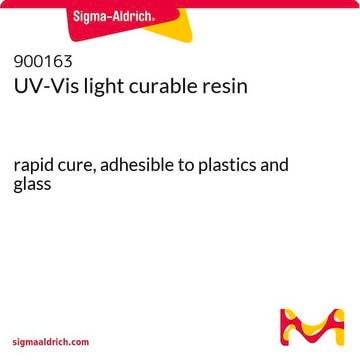推荐产品
质量水平
方案
≥98%
表单
solid
颜色
white
mp
292.9 °C
紫外吸收
λ: 317 nm Amax
λ: 443 nm Amax
SMILES字符串
N(=C\c2c3c(ccc2O)cccc3)/c1c(cc(cc1)C(=O)O)C
InChI
1S/C19H15NO3/c1-12-10-14(19(22)23)6-8-17(12)20-11-16-15-5-3-2-4-13(15)7-9-18(16)21/h2-11,21H,1H3,(H,22,23)/b20-11+
InChI key
HCGGUBXKKWXERU-RGVLZGJSSA-N
应用
HNMB is a mechanochromic luminescent material with aggregation-induced emission (AIE). It has applications for pressure sensing and mapping.
In biology, pressure could direct the folding-unfolding of protein molecules, guide blood stream and even control the cell migration. The complexity with these cases makes the monitor and measurement of pressure from conventional force sensor based on classical mechanics impractical. Based on mechanical sensitive materials with ingenious design at the molecular level, a new way to detect pressure is developed. And mechanochromic luminescent (MCL) materials have formed a vital part of such materials. They are intentionally endowed with the ability to change luminescence property (e.g., emission wavelength, emission intensity and lifetime) under mechanical force, which can be readily detected by naked eyes or instruments. As molecule-based sensors, they are compatible to various flexible substrates and arbitrarily curvilinear surfaces, facilitating many applications.
In biology, pressure could direct the folding-unfolding of protein molecules, guide blood stream and even control the cell migration. The complexity with these cases makes the monitor and measurement of pressure from conventional force sensor based on classical mechanics impractical. Based on mechanical sensitive materials with ingenious design at the molecular level, a new way to detect pressure is developed. And mechanochromic luminescent (MCL) materials have formed a vital part of such materials. They are intentionally endowed with the ability to change luminescence property (e.g., emission wavelength, emission intensity and lifetime) under mechanical force, which can be readily detected by naked eyes or instruments. As molecule-based sensors, they are compatible to various flexible substrates and arbitrarily curvilinear surfaces, facilitating many applications.
储存分类代码
11 - Combustible Solids
WGK
WGK 3
闪点(°F)
Not applicable
闪点(°C)
Not applicable
Xin Qian et al.
Advanced materials (Deerfield Beach, Fla.), 30(25), e1800291-e1800291 (2018-05-04)
Mechanically driven light generation is an exciting and under-exploited phenomenon with a variety of possible practical applications. However, the current driving mode of mechanoluminescence (ML) devices needs strong stimuli. Here, a flexible sensitive ML device via nanodopant elasticity modulus modification
Eethamukkala Ubba et al.
Chemistry, an Asian journal, 13(21), 3106-3121 (2018-08-10)
Mechanoluminescence (ML) involves the emission of light from various organic and inorganic materials upon mechanical stimulus. In this review, we contemplate the advances of metal-free, purely organic ML compounds with aggregation-induced emission (AIE), which give strong emission upon mechanical force.
Mengyao Zhang et al.
Spectrochimica acta. Part A, Molecular and biomolecular spectroscopy, 220, 117125-117125 (2019-05-29)
In this study, we report a new compound, (E)-4-(((2-hydroxynaphthalen-1-yl)methylene)amino)-3-methylbenzoic acid (HNMB), which shows aggregation-induced emission property as well as intramolecular charge transfer (ICT) nature. In addition, it exhibits unique mechanochromic luminescence (MCL). The HNMB solid powder emits strong emission but
Trap-controlled mechanoluminescent materials.
Zhang J C, et al.
Progress in Materials Science, 103, 678-742 (2019)
Active Filters
我们的科学家团队拥有各种研究领域经验,包括生命科学、材料科学、化学合成、色谱、分析及许多其他领域.
联系技术服务部门






